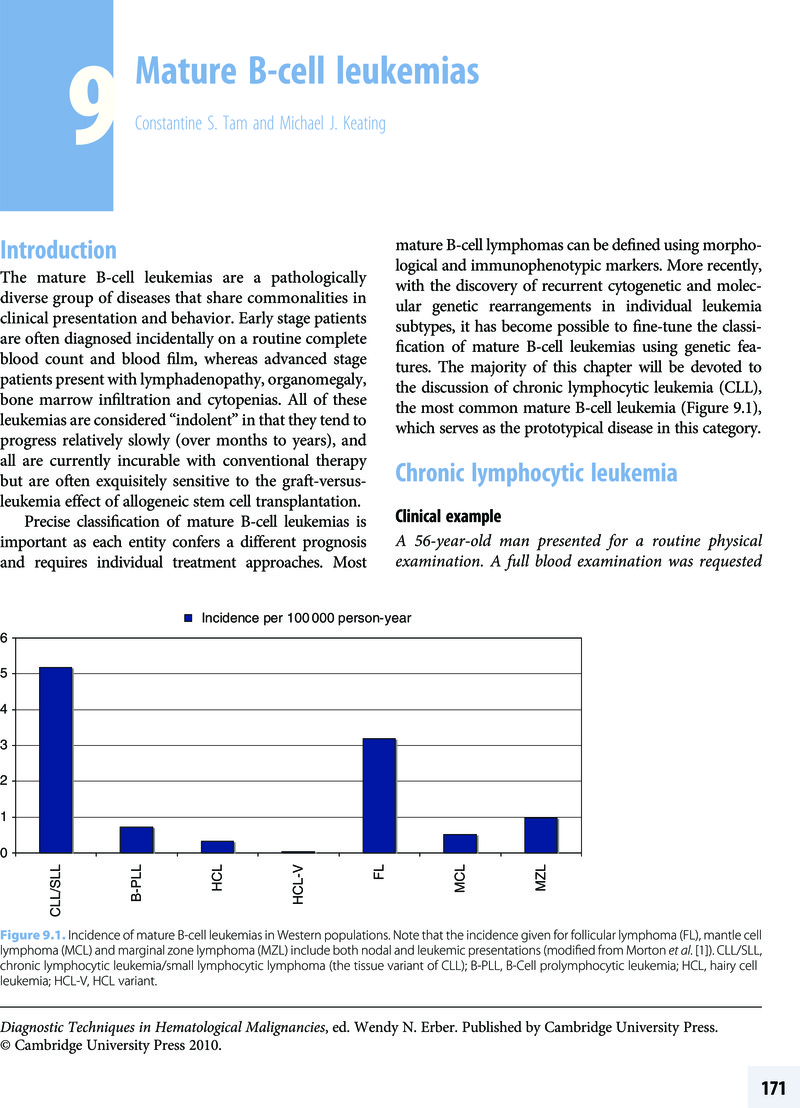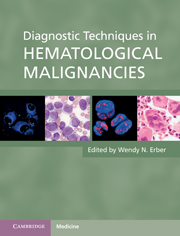Book contents
- Frontmatter
- Contents
- List of Contributors
- Preface
- Part 1 Diagnostic techniques
- Part 2 Hematological malignancies
- 6 The integrated approach to the diagnosis of hematological malignancies
- 7 Acute lymphoblastic leukemia
- 8 Acute myeloid leukemia
- 9 Mature B-cell leukemias
- 10 Mature T-cell and natural-killer cell leukemias
- 11 Lymphoma
- 12 Plasma cell neoplasms
- 13 Chronic myeloid leukemia
- 14 Myeloproliferative neoplasms
- 15 Myelodysplastic syndromes and myelodysplastic/myeloproliferative neoplasms
- Index
- References
9 - Mature B-cell leukemias
from Part 2 - Hematological malignancies
Published online by Cambridge University Press: 06 December 2010
- Frontmatter
- Contents
- List of Contributors
- Preface
- Part 1 Diagnostic techniques
- Part 2 Hematological malignancies
- 6 The integrated approach to the diagnosis of hematological malignancies
- 7 Acute lymphoblastic leukemia
- 8 Acute myeloid leukemia
- 9 Mature B-cell leukemias
- 10 Mature T-cell and natural-killer cell leukemias
- 11 Lymphoma
- 12 Plasma cell neoplasms
- 13 Chronic myeloid leukemia
- 14 Myeloproliferative neoplasms
- 15 Myelodysplastic syndromes and myelodysplastic/myeloproliferative neoplasms
- Index
- References
Summary

- Type
- Chapter
- Information
- Diagnostic Techniques in Hematological Malignancies , pp. 171 - 190Publisher: Cambridge University PressPrint publication year: 2010

